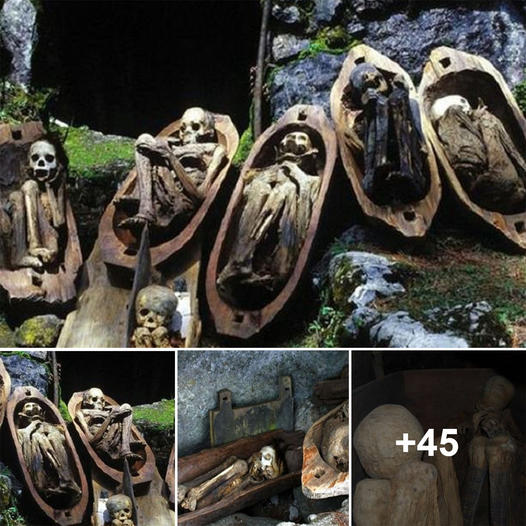Unraveling the Mystery of Smoked Mummies Within Cavernous Mountains

The fire mummies, also called the Ibaloi mummies, Benguet mummies, or Fire mummies, were found in various caves in the town of Kabayan, located in the Benguet province. These mummies were preserved through a lengthy dehydration and smoking process, offering researchers valuable insights into a unique mummification technique and the tribal people who practiced it.

Unlike the common mummification techniques, smoking was a rare method that required a long process but successfully preserved numerous bodies over the years. Scientists estimate that the Kabayan mummies were created by members of the Ibaloi tribe between 1200 and 1500 A.D. However, some speculate that the practice may have originated even earlier. Although there is a debate about the exact timeline, it is widely agreed that the mummification practice ceased in the 1500s when the Philippines was colonized by Spain.
According to some beliefs, only tribal leaders were mummified through smoking. The process would start before death, with the individual undergoing the initial steps. As death approached, the person would consume a highly concentrated saltwater beverage, which dehydrated the body and initiated the drying process. After death, the remaining steps of the mummification process would take place. This process could take several weeks to several months to complete.

The body was thoroughly washed and then positioned above a heat source, without direct exposure to fire or flames. The body would be suspended above smoldering kindling, allowing the heat and smoke to slowly and completely dehydrate the entire body. To further aid the internal drying process, tobacco smoke was blown into the deceased’s mouth, thought to remove all fluids from the internal organs. Finally, the smoked body was rubbed with herbs before being placed in one of the caves, where they were eventually discovered.
The Kabayan mummies still remain in the caves today, preserving their historical significance. However, theft and vandalism pose significant threats to these ancient artifacts. Consequently, the area has been designated as one of the 100 Most Endangered Sites in the world by Monument Watch, and efforts are underway to consider it for UNESCO World Heritage Site status.

One notable mummy, Apo Annu, was stolen from the caves in the early 1900s. Apo Annu was dressed in tribal chief attire and adorned with intricate tattoos. Regarded as a great hunter and believed to be part-human, part-deity, Apo Annu’s absence was thought to have caused natural disasters and hardships. Eventually, Apo Annu was returned to the Ibaloi tribe, who reburied him to restore balance and prevent further disruptions. While some stolen Kabayan mummies are yet to be recovered, the return of Apo Annu demonstrates a desire to preserve and respect these sacred burial locations.
The Kabayan mummies face the constant threat of theft and vandalism, which could result in their disappearance and destruction. To safeguard these ancient treasures, it is crucial to designate the Kabayan caves as protected sites and keep the locations of some mummies secret to prevent looting and damage.

The Kabayan mummies serve as a testament to the ingenuity of the ancient Ibaloi tribe and their meticulous processes for honoring the deceased. The Ibaloi tribe continues to view these burial grounds as sacred, and with ongoing protection measures, further discoveries can be made about their history and culture while ensuring the preservation of these hallowed remains and their surrounding areas.